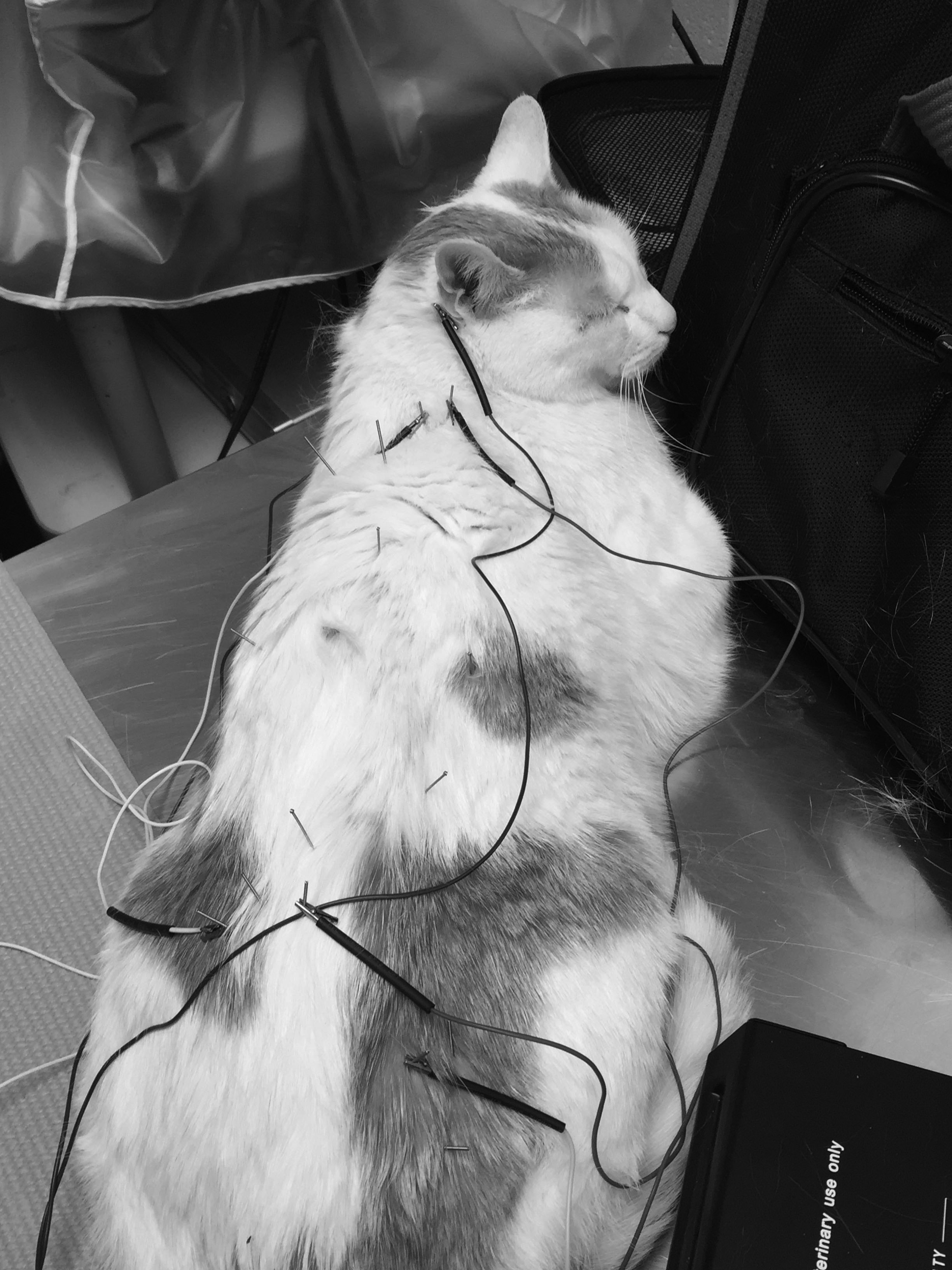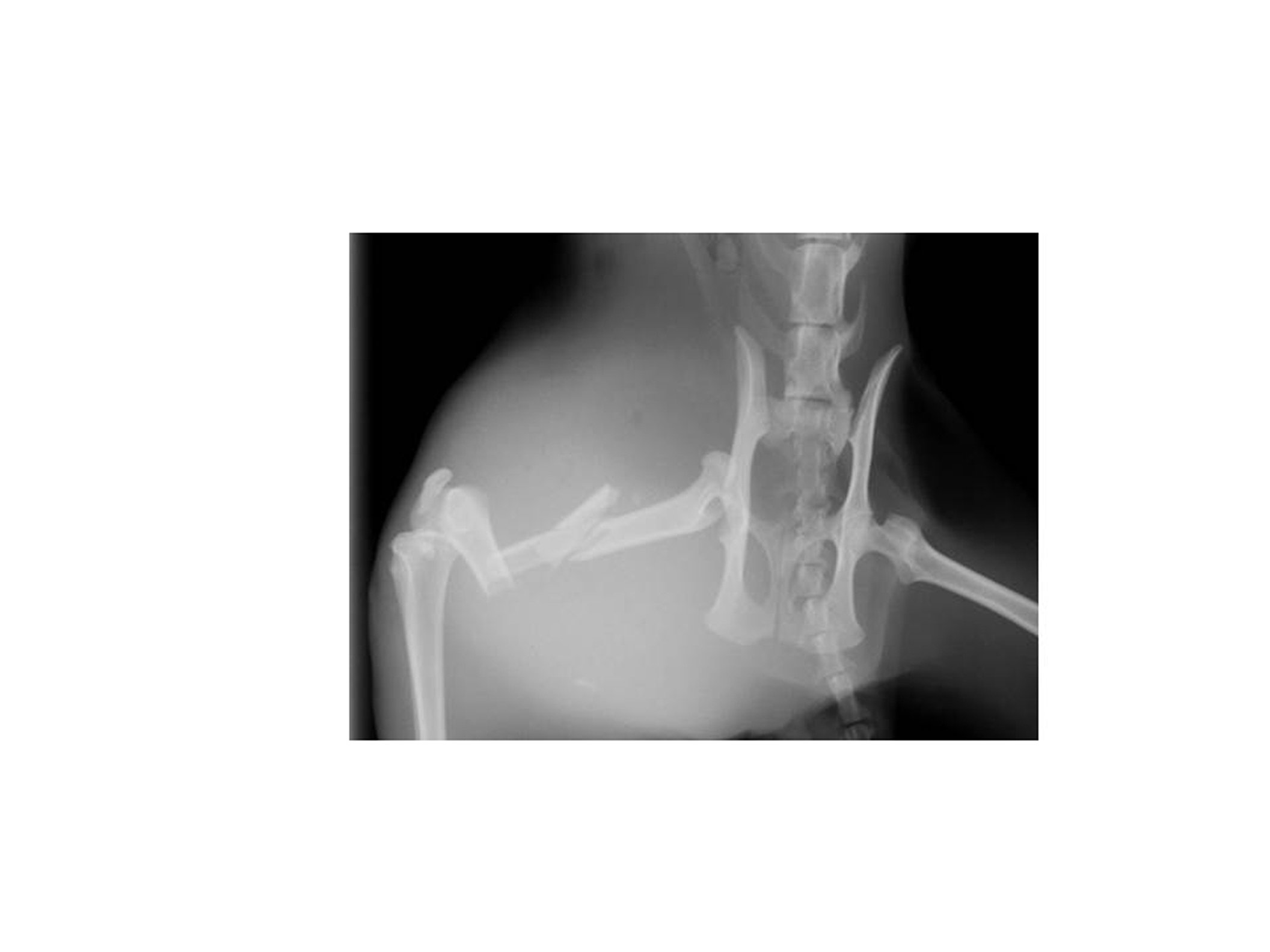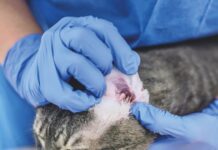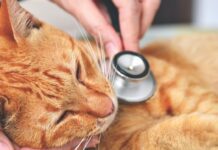When it comes to leaping, landing and twisting in mid-air, cats earn accolades for agility, flexibility and acrobatic prowess. It’s not unusual to witness your cat leap effortlessly to the top of the refrigerator and, when ready, to land softly and easily on the kitchen floor. But despite their grace and flexible physique, cats do not always land safely on their feet and can be at risk for painful sprains, broken legs, and other fractured bones.
BVSc

“Any cat or kitten will injure a bone if the trauma is severe enough,” says Rory Todhunter, BVSc, Ph.D., ACVS, professor of surgery at Cornell University College of Veterinary Medicine. “Kittens tend to break bones at growth plates, while adult cats tend to sprain the ligaments around joints or fracture their forelimbs (radius and ulna) or hind limbs (femur or tibia).”
Intense Pain. Your cat could be in intense pain due to breaking a leg and/or other bones due to falling out of a tall tree and/or landing hard. Cats can also suffer fractured bones during attacks by other cats, dogs or coyotes roaming neighborhoods, or when being struck by a moving vehicle.
Regardless of the cause, fractures and other injuries warrant an immediate trip to the veterinary clinic. In addition to legs, the most common bone fractures in cats include the tail, femur, pelvis, and jaw.
Due to client demand — though feline patients remain few at this point — Cornell expanded its outreach in 2014 to provide a comprehensive rehabilitation program for injured pets in its Sports Medicine and Rehabilitation Service. (SeeRehab for Catsbelow.)

“It’s all about trying to improve the quality of life in pets and to help them stay stronger and more mobile for a longer period of time,” says Dr. Joseph Wakshlag, assistant professor of veterinary nutrition at Cornell and charter member of the American College of Sports Medicine and Rehabilitation.
Symptoms of an Injury. How can you determine if your cat sprained a limb or broke it? Cats are masters of disguising signs of weakness, including bone fractures. Typically, if they have a bone fracture, you can expect to see them:
- Remain in one place
- Deliberately lift the affected leg and not put weight on it
- Stop grooming
- Decline meals or hide under the bed or other places inaccessible to perceived predators.
You may also see swelling around the affected joint, which could also indicate an infection, abscess, or cyst. However, fractures involve more severe trauma, and in some instances, you may hear grating or a crackling sound when the bone moves. This sound is called crepitation. Untreated, the affected area can quickly become extremely painful and infected if the fracture is open (a break in the skin) or may cause shock, especially if the fracture involves the pelvis (which may predispose to blood loss in the pelvic muscles) or spinal cord shock from a broken back.
“If there is blunt trauma to the chest, lung contusions and bleeding, the escape of air into the chest cavity can rapidly compromise breathing and oxygen exchange, resulting in death in the worst-case scenarios,” says Dr. Todhunter.
Fractures fall into one of these categories, depending on the severity:
- Greenstick fracture:The bone may be cracked but not completely broken. Only one side of the bone cortex is disrupted. Think of this as a hairline fracture.
- Closed fracture:The bone is broken but the overlying skin is still intact.
- Open fracture:The bone can be in multiple pieces and even protrude through the skin. The cat is at risk for infection if the exposed bones become contaminated with dirt or debris or bacteria from human hands.
- Epiphyseal fracture:The bone is broken at the end of the bone or the soft growth plates, also near the end of long bones, especially the femur (upper hind limb) and humerus (upper front limb). These fractures tend to occur in young, growing kittens under 1 year of age.
- Pathologic fracture:Bones can be broken due to poor nutrition, bone infections or bone cancer.
Taking a cat with a fracture to the veterinary clinic can be daunting. Because cats have flexible spines and razor-sharp puncturing canine teeth, approach your cat slowly and calmly. Wrap him in a thick bath towel and place him and the towel inside a pet carrier that ideally has a top opening. It is easier to place a cat from the top of the carrier rather than trying to slide him through the front opening. Do not attempt to scruff an injured cat from the back of the neck. That may make him more agitated and will not control the clawing attacks from his back legs.
Alert the nearest veterinary clinic that you are en route so that the staff can have an exam room ready.

Rory Todhunter
“If the fracture is open, the main thing to do is not to get human contaminants in the wound,” Dr. Todhunter says. “Dirt and debris off the road are things veterinarians can deal with, but bacteria from human hands are much harder to treat in cats.”
If you apply a splint to a broken leg, cover it in a soft bandage. Do not, however, splint fractures above the elbow or above the stifle joint (comparable to the human knee), which connects the femur, patella and tibia in the hind limbs. “In theory, the splint should immobilize the joints above and below the fracture,” Dr. Todhunter says.
Anticipate that the veterinarian will X-ray your cat’s injuries, clean and sterilize the area and administer pain medication. Blood tests will be performed to rule out contamination and infection. Depending on the location and severity of the fracture, your cat may require orthopedic surgery. He may be fitted with a cast or require pins or surgically implanted steel plates to restore bone alignment and improve healing.
“Kittens have softer bones than adult cats, which can make surgical repair harder, but they tend to heal faster,” Dr. Todhunter says. “Cats and dogs have approximately the same bone quality.”
Surgical costs can range from $1,000 to $5,000 or more, depending on the complexity of the fracture and your area of the country.
When your cat returns home, it’s important to follow the veterinarian’s post-surgical advice. You’ll need to be on the alert for signs of swelling or excessive discharge. If your cat needs sutures or staples, the veterinarian will remove them within 10 to 14 days.
Equally important is limiting your cat’s activity to allow the broken bone to heal properly and to prevent him from chewing or clawing at the bandages. Consider putting him in a large crate that contains a litter box and cushioned bedding. Or keep him in a small room without any counters for him to climb and provide necessities, such as a litter box, water and food bowls, and bedding.
Practice patience. Depending on your cat’s age and the location of the fracture, it could take two to 12 weeks for the bone to mend. “Follow the treatment or postoperative instructions exactly and work with a rehabilitation specialist if possible,” says Dr. Todhunter. “Remember, the cat has no free activity until the fracture is healed, which usually is confirmed by follow-up radiographs (X-rays) taken by your veterinarian.”
REHAB FOR CATS ON THE MEND
Cornell’s Sports Medicine and Rehabilitation Service offers treatments to help cats recover mobility and reduce pain after bone fractures. “Most cats don’t need extensive rehab; however, on occasion there are cats who won’t use the limb and then we get involved,” says Joseph Wakshlag, DVM, Ph.D., Cornell Section Chief of Clinical Nutrition. Dr. Wakshlag is board-certified by the American College of Sports Medicine and Rehabilitation.
“Cats are harder to work with, but there are exercises and devices we can use to get cats using a leg that they aren’t all that interested in using. This can jump start them into use on occasion,” he says.
Services include underwater treadmill exercise, transcutaneous (passing through the skin) electrical nerve stimulation, acupuncture, laser therapy for wound healing, platelet-rich plasma therapy, acupuncture and extracorporeal shockwave therapy.
“In fracture repair there are some modalities like therapeutic ultrasound or shockwave therapy that can help stimulate a bone to heal, particularly if it’s not healing well on its own,” Dr. Wakshlag says. “Occasionally, we see a cat who needs physical therapy, but the majority of our patients are dogs. Cats are smaller and don’t seem to be as prone to injured hips, knees or disc degeneration as dogs are, but we have treated some cats here with degenerative joints and the occasional non-healing fracture.”
Feline patients can sometimes pose a special challenge, especially when it comes to getting them to use underwater treadmills or exercises designed to strengthen injured or weakened limbs. “Cats have their own personalities and tend to do what they want to do — not what you want them to do,” says Dr. Wakshlag. “It is easier to get a dog recovering from a leg amputation to do a three-legged stand than a cat, who will be more apt to curl up in a ball than perform a three-legged stand. We have had a couple cats who did get used to the warm water and used the underwater treadmill, but as we know, cats and water sometimes don’t mix well.”
For more information, please visit http://www.vet.cornell.edu/HOSPITAL/SERVICES/COMPANION/SPORTS/





